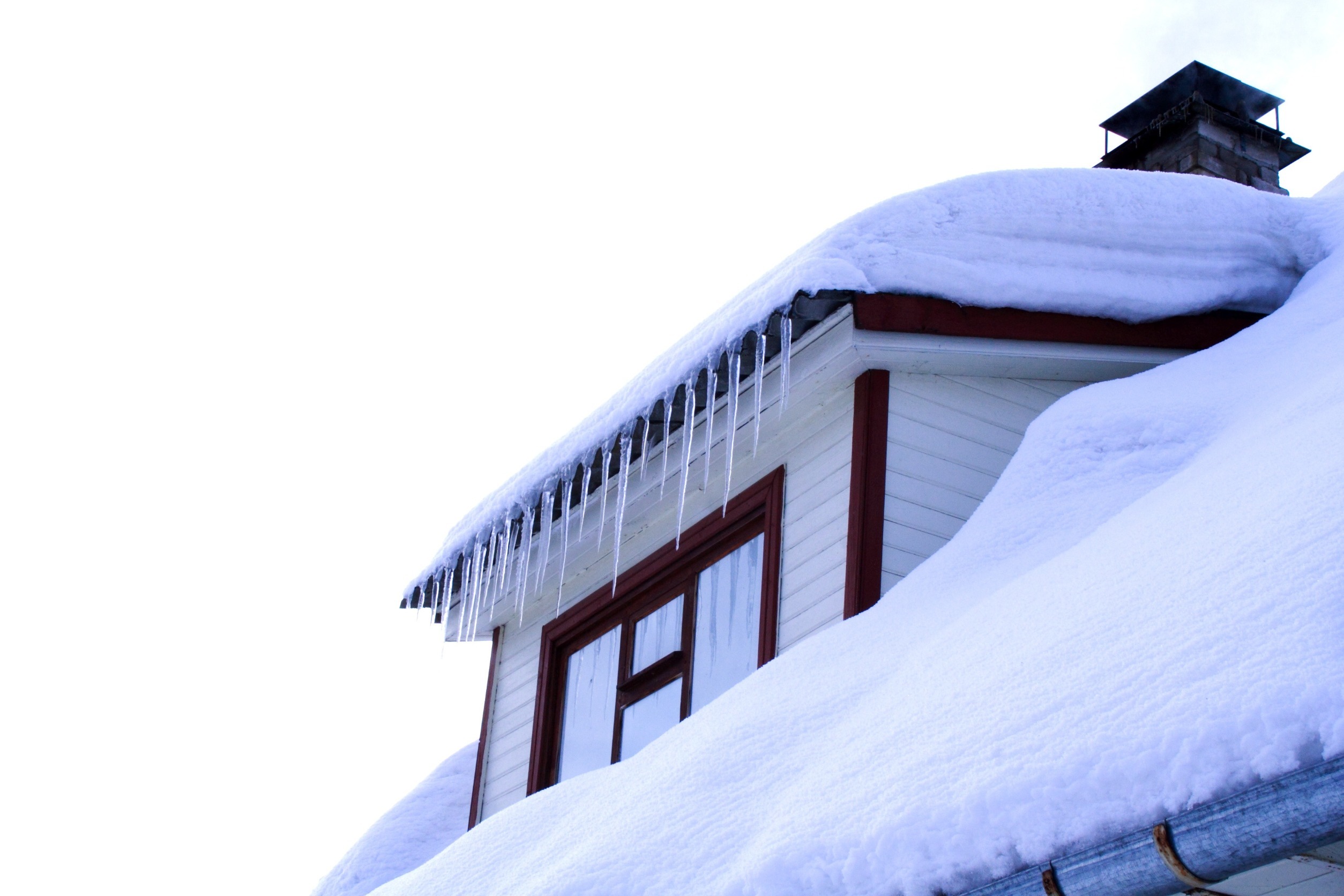Minnesota winters are no joke, and your roof takes the brunt of the cold, snow, and ice. Even the toughest roofs can face challenges when temperatures drop, and if you’re not prepared, these issues can snowball into bigger problems. Let’s break down five common winter roof problems and how you can keep your home safe and sound this season.
- Ice Dams
What’s Happening: Ever notice those pretty icicles hanging from the edge of a roof? Unfortunately, they’re a sign of ice dams, which form when warm air escapes from your attic, melts snow on your roof, and the water refreezes at the edges. Over time, this trapped water can creep under shingles and cause leaks.
What You Can Do: Start by insulating and ventilating your attic to keep warm air where it belongs—in your home, not under your roof. Clear gutters and downspouts to help water flow freely. If ice dams are already there, don’t grab a hammer to chip them away—that can damage your roof. Instead, call a professional for safe removal. - Snow Overload
What’s Happening: Snow looks light and fluffy, but when it piles up on your roof, it gets heavy fast. Too much weight can cause structural damage or, in extreme cases, roof collapse.
What You Can Do: Keep an eye on snow buildup after heavy storms. Use a roof rake to safely remove excess snow from the edges—just make sure to stay on the ground. If you’re worried about the weight, a professional roofer can inspect your roof and let you know if it’s time to act. - Condensation
What’s Happening: Warm air inside your attic meets a cold roof surface, creating condensation. Over time, this moisture can lead to mold, mildew, and even rotting wood.
What You Can Do: Proper attic ventilation is the key to avoiding this issue. Good airflow keeps temperatures consistent and moisture levels under control. Adding a vapor barrier and upgrading your insulation can also help stop condensation before it starts. - Leaks and Water Damage
What’s Happening: Winter weather makes small roof leaks worse. Melting snow can seep into cracks, causing water stains, dripping ceilings, and even mold growth inside your home.
What You Can Do: Inspect your roof before winter for damaged shingles, loose flashing, or other vulnerabilities. If you spot leaks during the season, don’t ignore them. Quick fixes like roof sealant can help temporarily, but a professional repair will be needed for a long-term solution. - Frozen Gutters
What’s Happening: When gutters freeze, they can’t drain properly. This can lead to water pooling on your roof or even ice dams.
What You Can Do: Clean your gutters in the fall to clear out leaves and debris that block water flow. Consider installing gutter guards for added protection. If your gutters do freeze, use a gentle de-icer—don’t pour hot water on them, as it could cause more damage.
Stay Ahead of Winter Roof Problems with A&M Roofing
Winter roofing issues don’t have to turn into disasters. With a little preparation and the right help, you can protect your home and avoid costly repairs. At A&M Roofing, we’ve seen it all, and we’re here to help with inspections, maintenance, and repairs to keep your roof in top shape all winter long. Contact us today and let’s make sure your roof is ready for the season!
